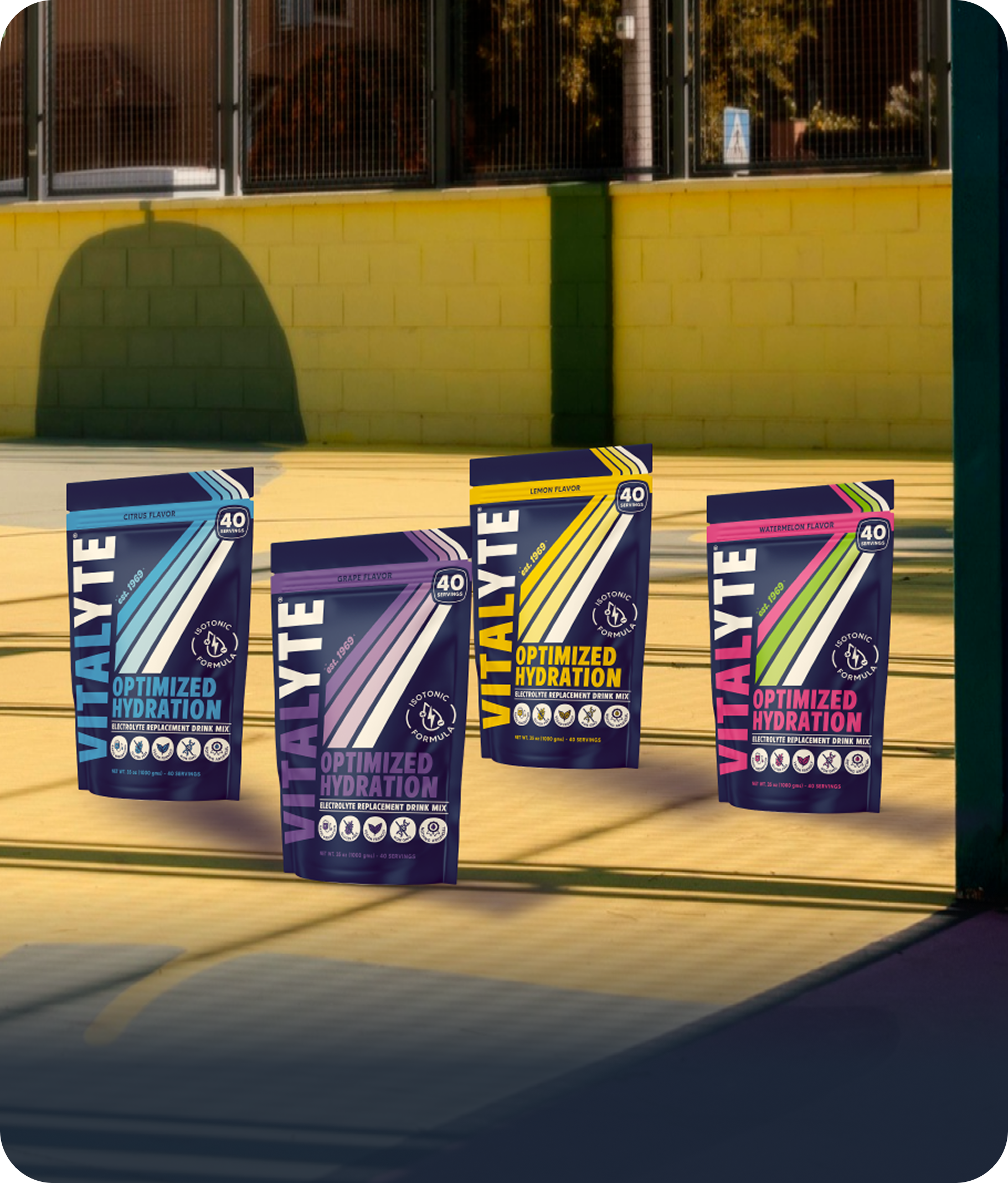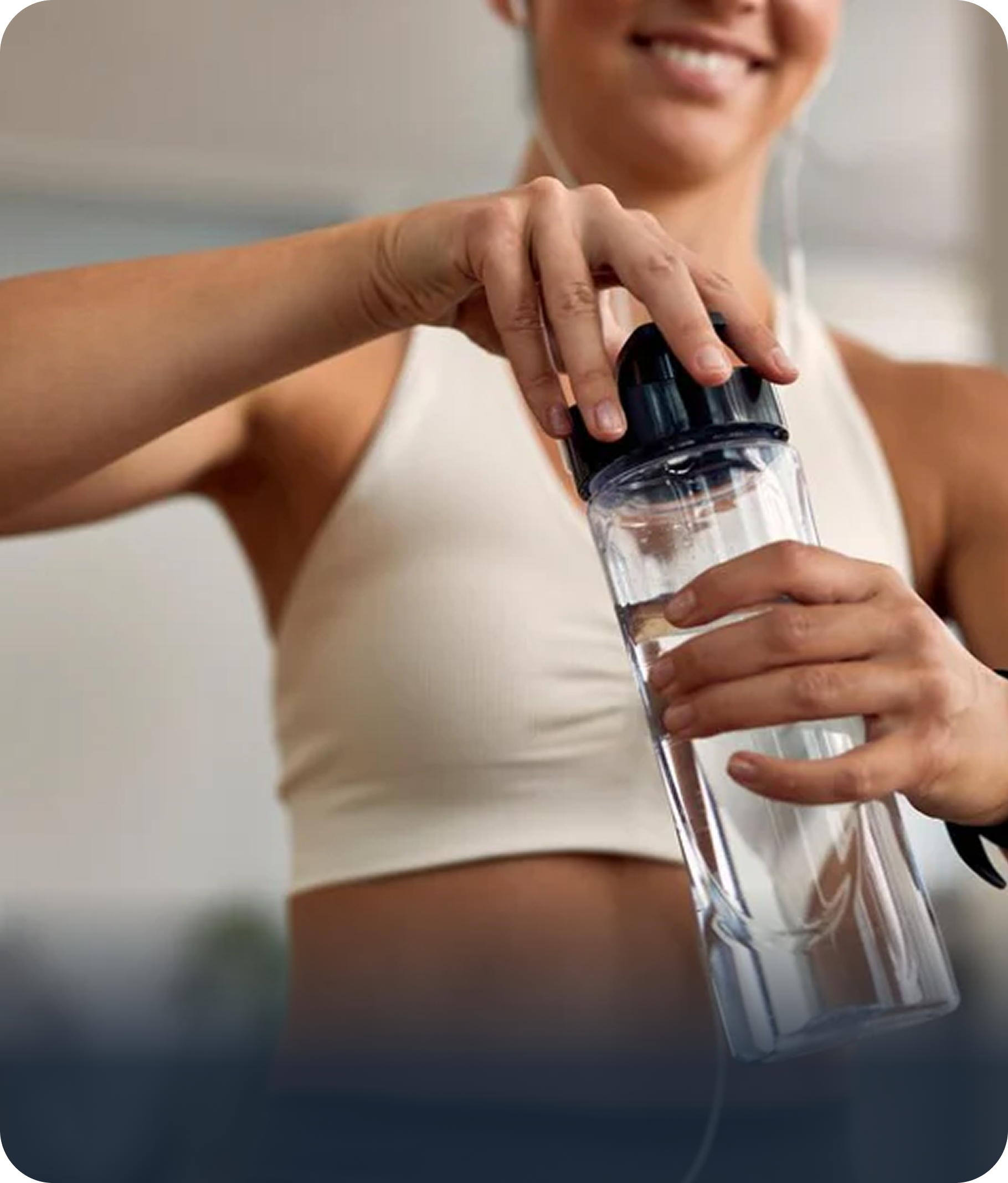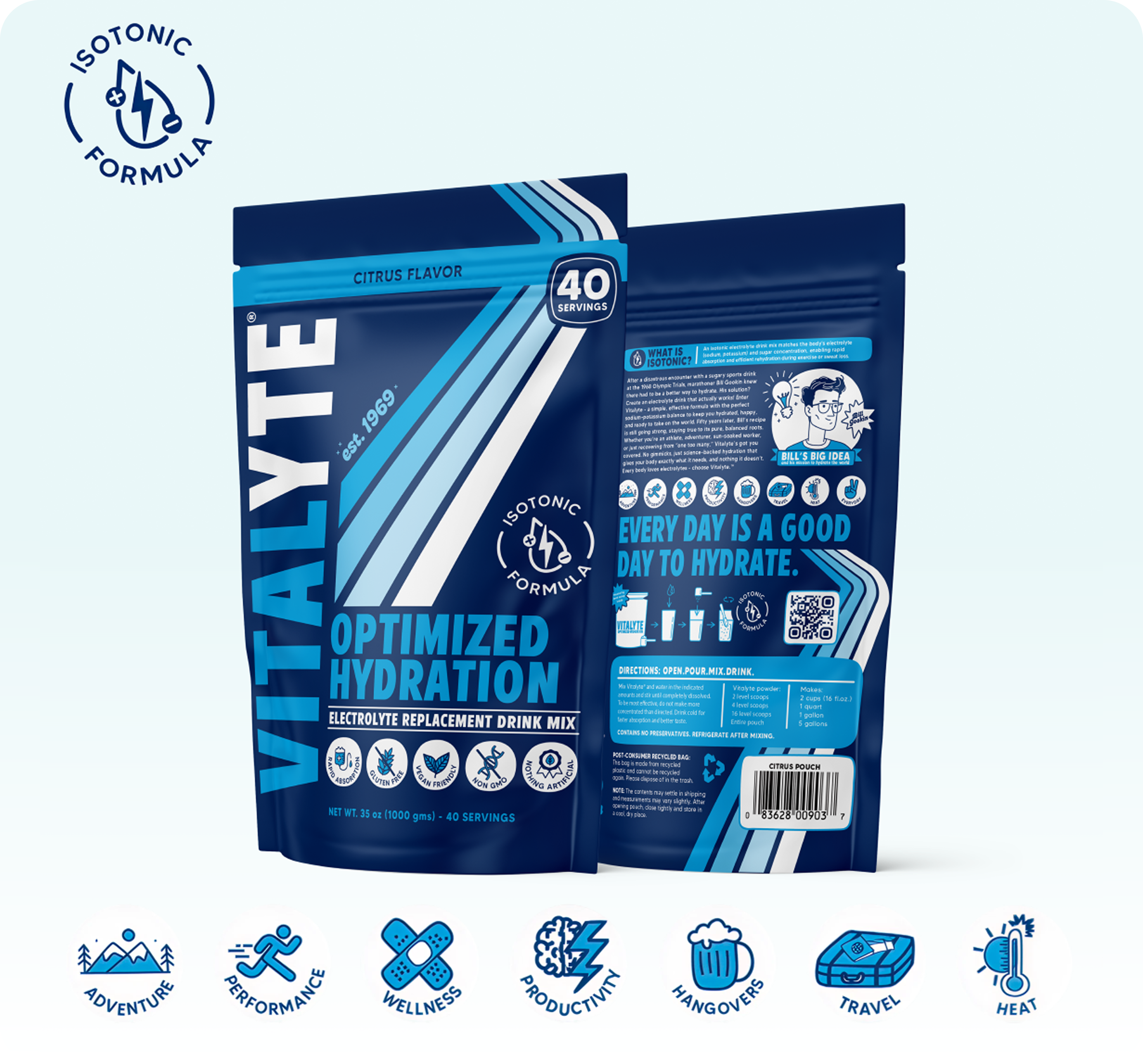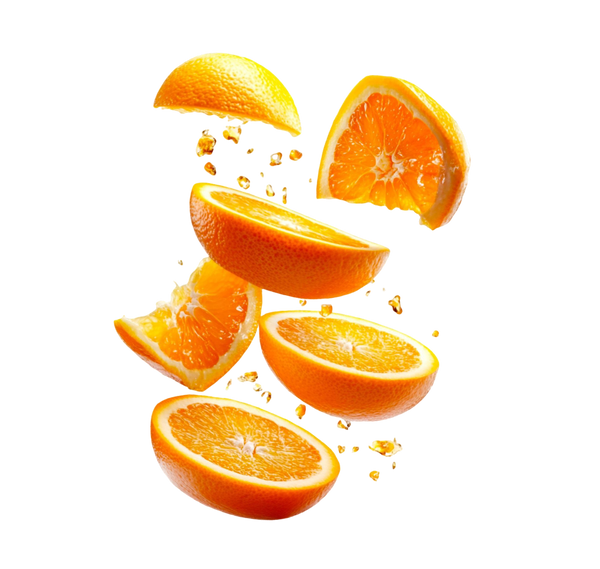Can I Just Eat Salty Foods Instead of Using Electrolyte Powder?
Share

No, salty foods cannot replace electrolyte powder for active hydration needs. Food requires 2 to 4 hours for digestion and absorption, contains poor sodium to potassium ratios (often 5:1 or worse), and can actually slow hydration by sitting in your stomach and creating osmotic drag. Electrolyte powder dissolved in water absorbs in 15 to 20 minutes with balanced mineral ratios (approximately 1:1.4 sodium to potassium) that your body can use immediately without the digestive burden of solid food.
For baseline daily needs when you're not actively sweating or dehydrated, food works fine. But when you need rapid rehydration during exercise, heat exposure, or illness recovery, powder simply works better.
The Fundamental Problem: Absorption Speed
When you eat food, even something as simple as salted crackers, your body has to work through the entire digestive process before accessing the minerals.
Digestion takes time. Solid food sits in your stomach for 2 to 4 hours before moving to your small intestine where mineral absorption primarily happens. During that time, you're still losing fluids through sweat or other mechanisms.
Food requires processing. Your digestive system has to break down food structure, separate nutrients, and prepare them for absorption. This uses energy and resources your body might not have available during heat stress or intense exercise.
Absorption is indirect. The sodium and other minerals in food are bound up in complex structures. Your body has to work to extract them, which further delays availability.
Electrolyte powder dissolved in water bypasses most of this. When properly formulated at isotonic concentration around 280 to 300 mOsm/L, the solution moves directly from your stomach into circulation. We're talking 15 to 20 minutes versus 2 to 4 hours.
When you're cramping during a marathon, experiencing heat exhaustion on a job site, or recovering from illness induced dehydration, that time difference matters enormously.

The Ratio Problem: Too Much Sodium, Not Enough Potassium
Most salty foods are extremely imbalanced in their electrolyte ratios. This creates problems your body has to work around.
Pretzels might contain 400mg sodium per serving with essentially zero potassium. Pickles provide 300 to 800mg sodium with minimal potassium. Salted nuts offer better potassium levels but still skew heavily sodium dominant. Canned soup can pack 800 to 1200mg sodium per serving with modest potassium at best.
Your sweat contains both sodium and potassium in roughly balanced amounts. Replacing only sodium forces your body into compensatory mechanisms that can worsen the situation.
Here's what happens when you consume excess sodium without adequate potassium: Your body has to maintain cellular balance between these two minerals. When sodium levels spike without proportional potassium, your cells must dump their own potassium reserves to maintain equilibrium.
This is exactly what Bill Gookin discovered through decades of testing and what later affected Olympic swimmer Amy Van Dyken at the 1996 Atlanta Olympics. High sodium drinks forced her body to deplete potassium, triggering full body cramping.
Sodium also pulls water from circulation into tissues when it's not balanced with potassium. This reduces blood volume even though you're retaining water. The result is puffy hands and feet, increased cardiovascular strain, and ironically, signs of dehydration despite water retention.
Properly formulated electrolyte powder maintains balanced ratios. Vitalyte provides 135mg sodium to 193mg potassium, a ratio of approximately 1 to 1.4 that matches what your body actually needs.
The Water Displacement Issue
Eating salty foods triggers thirst, which seems helpful. But this creates a secondary problem during activity.
Solid food sits in your stomach along with whatever water you drink to wash it down. This combination slows gastric emptying, the rate at which your stomach releases contents to your small intestine. The slower this happens, the slower you actually hydrate.
Concentrated sodium pulls water into your digestive tract to dilute itself before absorption can begin. This is the osmotic drag problem. You've essentially created a hypertonic solution in your gut, which temporarily pulls water from your bloodstream into your intestines.
During exercise or heat stress, this is counterproductive. You're already losing fluid through sweat. Now you're also temporarily pulling water from circulation into your digestive system. The net effect is worsened dehydration before things eventually balance out.
Food volume matters. Eating enough pretzels to match the sodium in an electrolyte drink mix means consuming significant food volume. Your stomach has limited capacity, especially during activity. That space filled with food is space not available for fluid.
Endurance athletes know this problem intimately. Solid food during long events often causes stomach distress, nausea, or that heavy, sloshing feeling that makes you want to slow down.

What Salty Foods Are Good For
Before this sounds like an argument against ever eating food, let's be clear about when salty foods work perfectly well.
Daily baseline maintenance outside of active dehydration scenarios. If you're going about normal daily activities, food provides adequate electrolytes. Meals containing vegetables, dairy, meat, whole grains, and yes, some added salt, give you what you need.
Post recovery once rehydration is underway. After you've replaced acute fluid losses with electrolyte drinks, food becomes appropriate again for maintaining levels. That post workout meal with balanced nutrition does exactly what it should.
Situations where you're not actively losing fluids. If you're sitting in an air conditioned office, even on a hot day, you're not sweating significantly. Food works fine.
When you have hours for digestion to work. Eating a balanced meal 2 to 3 hours before activity gives your body time to process and absorb nutrients, including electrolytes.
The issue isn't that salty foods lack value. It's that they're the wrong tool for acute hydration needs during or immediately after activity or illness.
The Real World Test: When Food Falls Short
Bill Gookin learned this lesson through direct experience at the 1968 Olympic Trials. The sugary sports drink he used was essentially liquid food with high concentration. It sat in his stomach, pulled water from his circulation, and contributed to his collapse.
That disaster led to 25 years of testing to find what actually works during active dehydration. The answer wasn't more food or saltier food. It was properly concentrated electrolyte solution that absorbs immediately.
Search and Rescue teams discovered this truth through necessity. When someone is experiencing heat exhaustion on a trail, you can't wait 3 hours for them to digest pretzels. You need rapid rehydration, which means isotonic electrolyte solution.
Medical relief teams working cholera outbreaks in Rwanda and Bangladesh found the same thing. Patients dying from dehydration need immediate fluid and electrolyte replacement. Food is irrelevant when someone is that depleted. Properly formulated oral rehydration solution, which is essentially what isotonic electrolyte powder provides, saves lives because it works fast.
Ultra endurance athletes running 50 or 100 mile races know that solid food becomes increasingly difficult to tolerate as events progress. But electrolyte drinks consumed steadily throughout keep them moving. The difference in absorption speed and stomach tolerance makes or breaks these efforts.
The Practical Compromise: Both Have Their Place
The smart approach isn't food versus electrolyte powder. It's understanding when each works best.
Before activity: Eat balanced meals 2 to 3 hours out that include natural sodium and potassium sources. Fruits, vegetables, dairy, and moderate salt provide good baseline levels.
During activity: Use properly formulated electrolyte powder mixed with water. Sip regularly to maintain hydration without overwhelming your stomach. Skip solid food for the first 60 to 90 minutes.
Extended efforts: Some solid food may be tolerable after the first hour or two if needed for energy. But continue prioritizing fluid and electrolytes through drinks.
After activity: Start with electrolyte drinks to begin rehydration. Within 30 to 60 minutes, add food back in. Now your digestive system can handle it, and you're not in crisis mode.
Daily life: Food provides adequate electrolytes for baseline needs when you're not actively losing fluids through sweat or illness.

The Bottom Line: Speed and Balance Matter
Can you technically get electrolytes from salty foods? Yes. Will those electrolytes eventually absorb and benefit you? Sure, given enough time.
But when you need hydration during exercise, work in heat, or recovery from illness, salty foods create more problems than they solve. Slow absorption, poor ratios, digestive burden, and water displacement all work against you.
Properly formulated electrolyte powder provides balanced minerals at isotonic concentration for absorption that rivals IV speed. No digestion required. No ratio problems. No delayed benefit.
This isn't about selling powder over pretzels. It's about matching the solution to the problem. When you're actively dehydrated or losing fluids rapidly, powder works and food doesn't.
Food has its place in daily nutrition and baseline electrolyte intake. But for active hydration needs, 50 years of testing and real world use prove that properly formulated powder simply works better.
Ready to experience the difference rapid absorption makes? Shop Vitalyte's isotonic electrolyte powder.
Frequently Asked Questions
What foods have the best natural electrolyte balance?
Fruits like bananas, oranges, and melons provide good potassium. Dairy products offer calcium and sodium. Leafy greens supply magnesium. But even these balanced foods require hours for digestion and absorption, making them better for daily maintenance than acute hydration needs.
Can I use salt tablets instead of electrolyte powder?
Salt tablets provide sodium but typically lack adequate potassium, magnesium, and the glucose needed to activate rapid absorption mechanisms. They also create concentrated spots in your stomach that can cause irritation. Research shows they're less effective than balanced electrolyte drinks.
What about sports drinks from the store?
Most commercial sports drinks have poor sodium to potassium ratios and excessive sugar that slows absorption. They're better than nothing but fall short of properly formulated isotonic powder. Check the ratios and concentration, most are hypertonic which delays hydration.
How much sodium do I actually need during exercise?
Most people need 300 to 600mg sodium per hour during sustained activity, paired with adequate potassium. Individual needs vary based on sweat rate, heat, and personal physiology. Properly formulated electrolyte drinks provide this in ratios your body can use immediately.
Is it better to eat pickles or drink pickle juice?
Pickle juice is slightly better than eating pickles because it's liquid and absorbs faster. But it still suffers from extremely high sodium with minimal potassium. You're better off with balanced electrolyte drinks that won't create mineral imbalances.
Disclaimer: This article is for informational purposes only and doesn't constitute medical advice. Individual nutrition needs vary. Consult with a healthcare provider or registered dietitian for personalized guidance.
About the Author
Evan Lucas, COO of Vitalyte
Evan has been with Vitalyte for 27 years, working to carry forward Bill Gookin's legacy of creating honest, effective hydration solutions. He uses Vitalyte daily for general wellness and hydration, and helps guide the company's commitment to real-world testing and straightforward science over marketing hype.

























